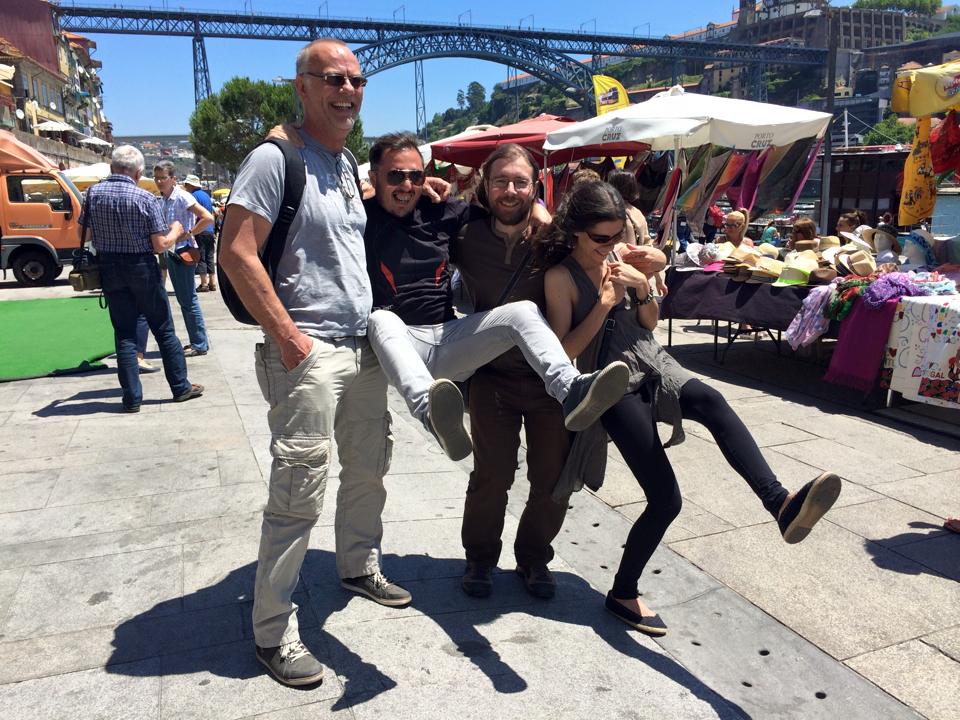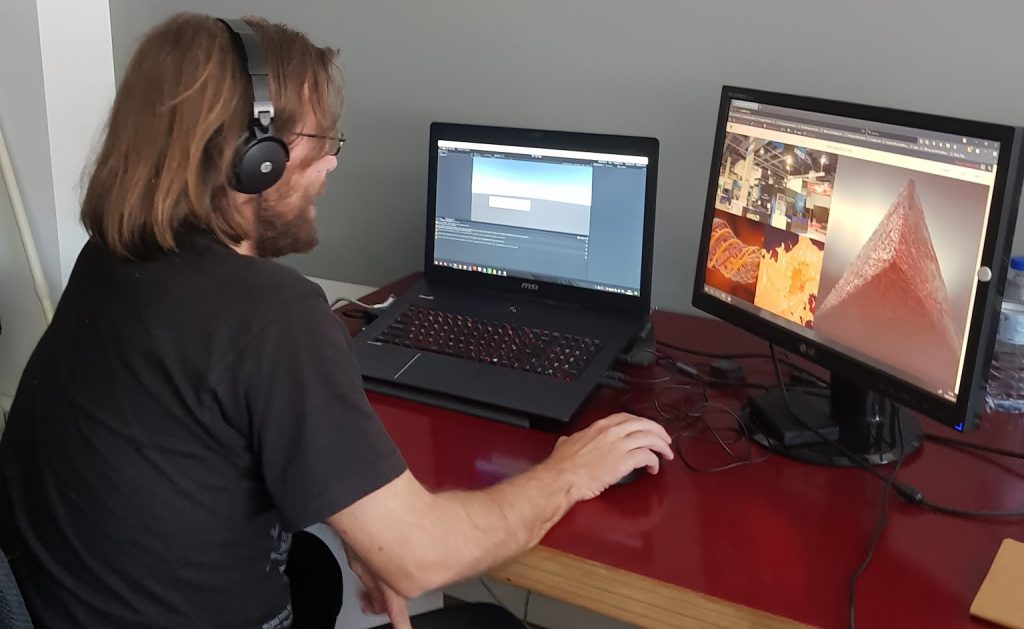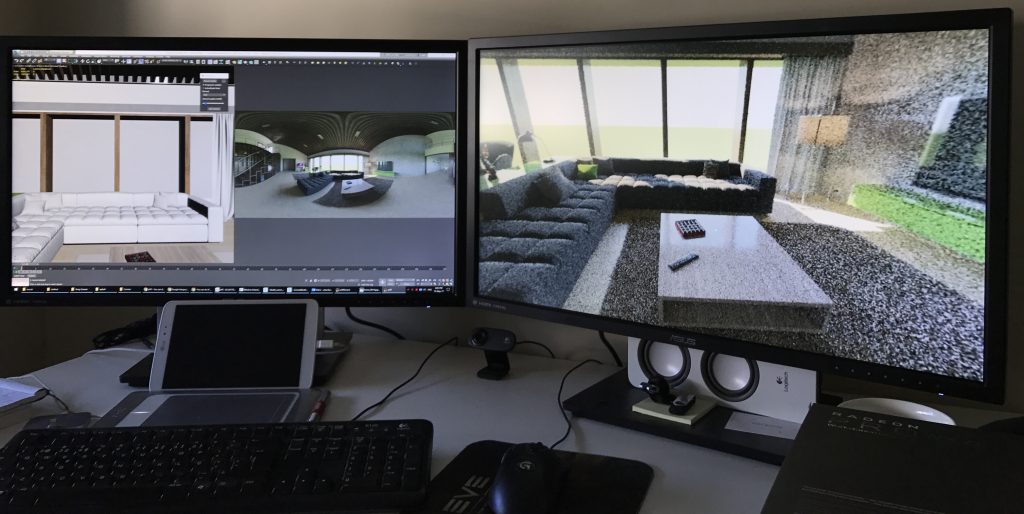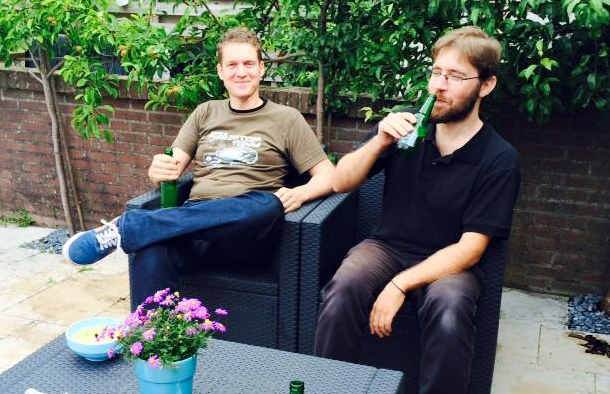You can do it! VFX (YCDIVFX) have just released yVR, a multiplatform tool for viewing mono and stereo 360 renders – think of it as a kind of “VFB for VR”. We spoke with Artur Leao to learn more about the software, and the company behind it.
yVR setup with Corona from YCDIVFX on Vimeo.
Read more about yVR
Hi everyone, this is Artur Leao from You can do it! VFX (YCDIVFX) and it’s a great pleasure to be writing this guest post on the Corona Renderer blog! We are big supporters of Render Legion and are fortunate to have a great relationship with them!
We’re introducing a new product called yVR that works great with Corona Renderer, so I’ll talk a bit about that, and hopefully it will be a great addition to your toolset alongside Corona Renderer.
YCDIVFX is a small studio based in sunny Portugal. We offer our clients a wide range of services such as VFX and Post Production for Film/Commercials, architectural visualization, and apps for Windows/Android/iOS including Virtual and Augmented Reality.

How did the company get started?
Me and Daniel knew each other online from various CG forums. For many years I thought he was from Brazil, and he thought I was from Brazil, so we never talked that much in private until one day we figured out that we lived just a few miles from each other!
Unfortunately (or fortunately!) I was about to leave the country to work for CCP Games in the beautiful landscapes of Iceland, but that didn’t stop us from sharing ideas and starting to work on some stuff together.
Fast forward a few years and after having lots of work done together, knowing we matched so well and had the same ideas and principles, we thought it was time to take a chance and create our own company. I came back to Portugal and we started this little big adventure! It’s been a great ride and I hope it will continue to be so for many years to come.

Tell us a little about the people behind yVR
Basically, it’s just me and Daniel doing a bit of everything – code, artwork, videos, you name it. We try to work on our own products between projects or in our “free” time (what many people call night and family time, we call “the second shift”). We love what we do and we like to keep our minds busy and that’s where most of our products come from!
How did you come up with the idea for yVR?
In our work on projects for clients, our day-to-day work, the current trend is that we’ve been creating lots of 360, VR, and VR footage + CGI. Working on those projects allowed us to identify needs that we think most people have when doing that kind of work. Our CG team feeds the Software Development team and that is definitely a big plus for creating productivity and pipeline tools that will benefit anybody.
So, in our most recent projects we were frustrated that it took us or our clients many steps to see the final result when working on a 360 image, and the idea for yVR sparked there. Having a simple tool that can show an in-progress render in 360 format is a major workflow boost for us, and a great tool for speeding up feedback when talking to our clients.
yVR Sneak Peek 3 from YCDIVFX on Vimeo.
What is yVR?
yVR is a new multiplatform tool that allows you to view your mono and stereo 360 renders directly on your device either in 360 or cardboard mode. So during rendering, rather than see the 2D view of the image, you can actually look around it just as you would do with a completed render.
yVR works locally for artists that want to see their work directly as they work, or across the internet to showcase to clients and get fast and efficient feedback on 360 projects – kind of like screensharing an in-progress render, only viewed in 360.
You can use it as an aid in your day-to-day work or you can use it to showcase your work to your coworkers or your clients, both onsite and remotely!

We’ve tried to reach the maximum number of potential users, while keeping important features, so we can proudly say that yVR works on Android, iOS, PC and WebGL (with no webserver setup needed, we took care of that for you!)
It works with Android 4.4+ and iOS 9.0+. We tried to reach out to everyone, and in fact one of our test machines is a very simple Android tablet costing just 100 bucks.
In terms of software compatibility and renderers, for now it’s working with 3ds Max 2014+ and Houdini 15.5+, where you can use it as a viewport in both packages.
Now for the meaty part – renderers! For 3ds Max, it’s compatible with all renderers that are able to do 360 monoscopic and/or stereoscopic images. There is better integration with some renderers, like Corona Renderer for example. With some others, their SDK doesn’t allow us to do things like progressive updates or support for activeshade, but that’s pretty much it in terms of limitations with other renderers.

We tested it pretty intensively with Corona Renderer and everything simply just works. Region renders? You got it. Interactive mode? Absolutely yes. Just check our sneak peek and tutorial videos to see it in action, it definitely just works! It was very easy to develop the integration with Corona Renderer.
I’d also like to mention the fact that once you buy yVR you have all the updates for free until a new major release (so at the moment, that would be up to yVR 2.0). We like free stuff too!
How did you first discover Corona Renderer?
We’ve known about Corona Renderer since version 0.5 or 0.6 if I’m not mistaken, when it started to make a buzz in the forums and on social media. We mostly tried it at home since at the time we used other renderers at work, but what most impressed me was the attitude of the team – it felt very similar to our way of thinking, and releasing fast, iterative updates on software is something we closely identify with.
What has been the biggest challenge in creating yVR?
I’d say there were two of them. First, it takes a lot of attention not to mess up! Supporting multiple hardware and software platforms can take its toll when you’re writing code – it can be easy to let a bug slip in on a particular platform, and it becomes time consuming to track that down when something goes wrong! But it’s part of the fun too 🙂
The other challenge was for us to find a way to get our target image resolution working without it being a bottleneck on older devices. We’ve been testing with 4k images and now it works pretty well! I can say we spent a reasonable time working very hard to get the best result and we finally did it! We have a few more ideas for optimization that we will try to introduce in the near future.

What other products are you working on at the moment, or have planned in the future?
We’ve been discussing this internally and we definitely have some ideas and there is a special project we’ve been working for quite some time but we don’t feel it’s ready for prime time yet. One good thing though, the work and products we’ve been developing recently have helped solving some problems we had and has given us a few more ideas for it.
Also, we will continue to work on yVR (we have ideas!) and of course on the other products we currently have, especially the Nyx framework products since we believe in them – and we also use them for our own work!
Once again, I’d like to thank all the Corona team, you’ve been great partners and more than that, great friends!
Artur Leao
Links
Download yVR 1.0: http://www.ycdivfx.com/product/yvr/
Website: http://www.ycdivfx.com/
YCDIVFX demo Reel: Vimeo
Great Tool!
Will there be a support for Cinema 4D (Corona) in the Future?
Be sure to contact YCDIVFX to ask them directly (just in case they don’t see your question here!). Their “About” page has their contact information, at http://www.ycdivfx.com/about/
Thanks!
Tom
We’re looking at it, hopefully yes, probably maybe 🙂
Tried to install trial, but antivirus blocked app saying it’s infected with malware :/
I assume you mean when installing the yVR app? If so, please contact You can do it! for support with their app, as they are unlikely to see the message here (certainly compared to contacting them directly). Thanks! Tom